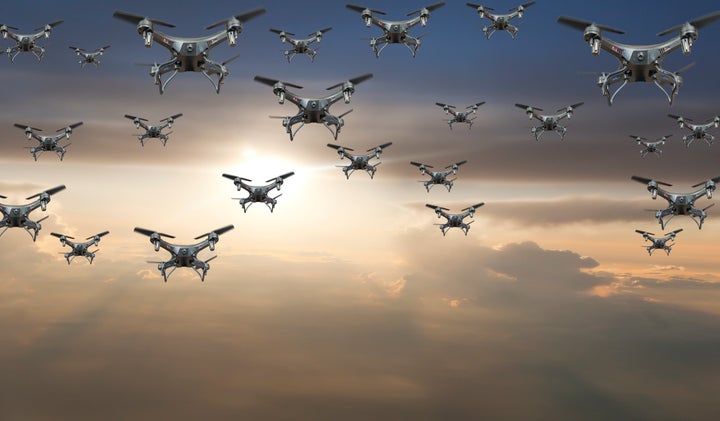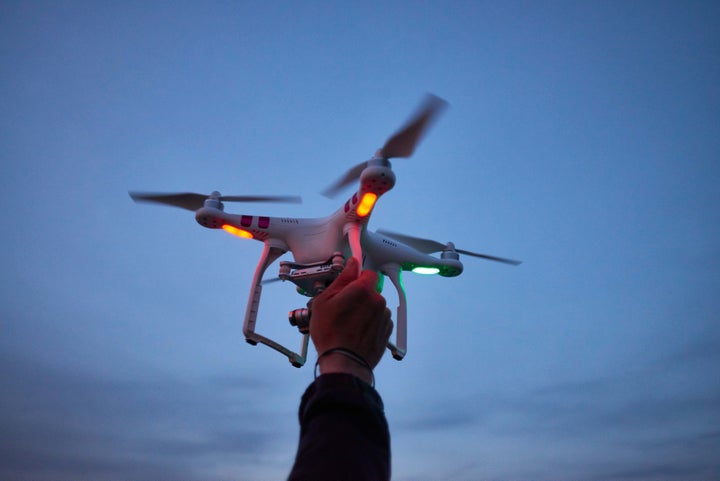
FBI agents covertly surveilling a criminal gang suspected of holding at least one person hostage had their cover blown when a swarm of drones descended on them.
Joe Mazel, the head of the FBI’s operational technology law unit, said the small unmanned units hovered around the agents and made “high-speed low passes” at them.
“We were then blind ― without the situational awareness,” he said.
Mazel, a veteran federal agent, recounted the incident this week while speaking to attendees at the AUVSI Xponential tech conference in Denver, according to Defense One.
He said it happened in a large U.S. city last winter but was reportedly careful not to share identifying details about the incident, saying it is “law enforcement sensitive.”
The drones, according to Mazel, not only buzzed the agents but also livestreamed the entire thing.
They “put the footage to YouTube so that [other members of the gang] who had cellular access could go to the YouTube site,” see the video and know the agents’ location, he said.
The criminals reportedly managed to foil the FBI’s plans. Mazel did not indicate whether any follow-up attempts were made.

The proliferation of drone use has been of increasing concern to law enforcement agencies as the technology has become easy to acquire and operate. Drones can be flown using GPS technology — meaning it takes minimal practice to fly them — and they can be adapted to carry small payloads.
The technology presents a range of opportunities for criminals. They permit low-risk reconnaissance missions and can been used for everything from drug smuggling to dropping drugs and weapons behind prison walls.
Mazel said criminal organizations have also been using drones to monitor activity outside police departments to see “who is going in and out of the facility and who might be cooperating with police.”
Gene Robinson of Drone Pilot Inc, which works with law enforcement and emergency response agencies, said drone countermeasures are somewhat limited because of FAA rules and potential liability issues.
“There are effective jamming and spoofing methods out there, but the FCC says it’s a federal offense to jam any signal,” he said. “They don’t make exceptions for anyone, including law enforcement.
Other strategies, such as capturing drones in nets shot from the ground or another drone, can also be problematic, according to Robinson.
“It’s a huge liability issue,” he said. “What if that thing falls to the ground and hits someone in the head? Or what if it’s loaded with explosives and detonates near a group of people? Who takes ownership of that?”
The most viable solution right now, Robinson said, is to educate the public.
“We do a lot in regard to counterdrone measures, but more than anything else, we educate people so they can recognize nonstandard configurations,” he said. “Typically, if you see a drone, you know what it’s supposed to look like with a camera on it, but if you see some big cube hanging off the bottom or a shuttlecock, you know it’s going to be bad.”
